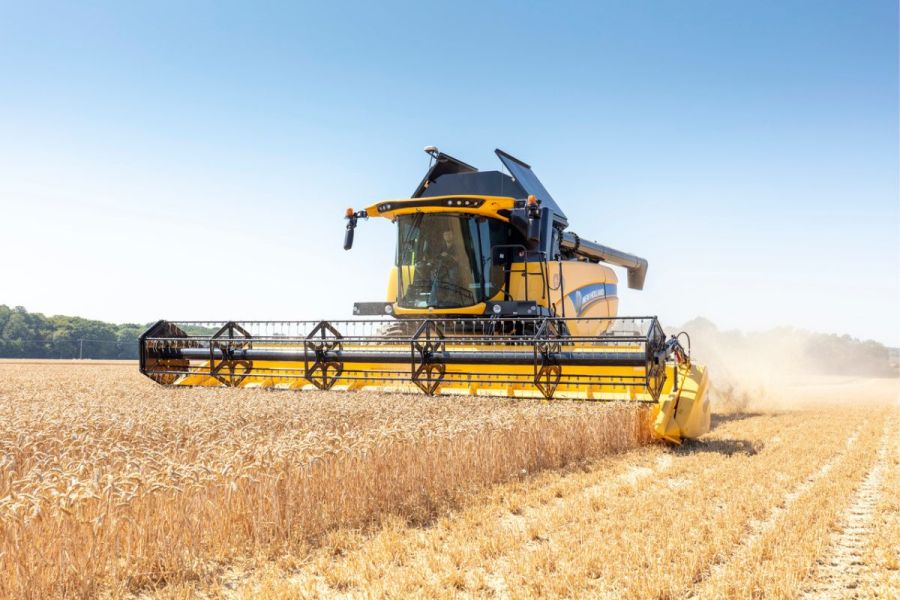Combines are a big investment, but they have a big job to do. As ever, the leading manufacturers are regularly adding improvements to their existing offering and launching new machines to increase farm productivity. CPM threshes out the latest releases.
By Melanie Jenkins and Mervyn Bailey
This combine was created to meet the growing needs of larger farmers and contractors.
The combine might spend much of the year in the shed and a relatively short period in the field working, but during the latter period it has to be set, ready to get going at a moment’s notice. And as growers are pressured to raise productivity and increasingly do things more efficiently, getting the most output in the shortest space of time is often the aim.
Here are some of the latest launches and innovations from the UK’s key players in the combine market to help growers optimise productivity.
John Deere
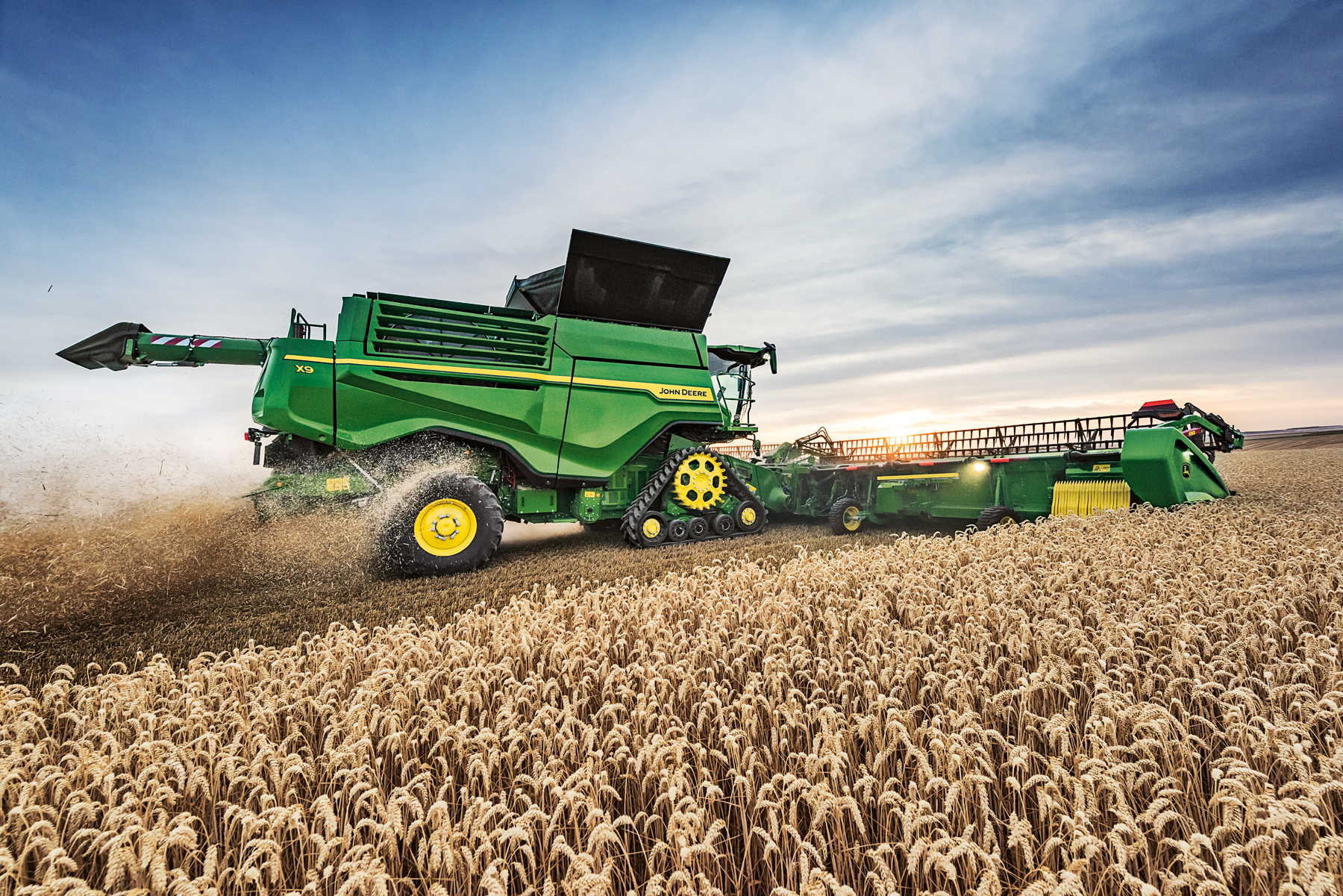
Deere’s most recent round of launches has seen it bring the largest combine in the world to the market.
John Deere’s most recent round of launches has seen it bring the largest combine in the world to the market. The initial idea of the X9 was born 8-10 years ago and its design involved all of the machine’s engineers working towards improved efficiency, according to the firm’s Ross Skimming.
“This combine was created to meet the growing needs of larger farmers and contractors. There’s a shortage of labour and everyone wants to be more efficient, and this drove the idea of a larger combine. It’s to prepare us and farmers for the future.”
John Deere has added two new X-Series combine harvester models to its line-up to help large-scale farmers harvest more tonnes per hour and more hectares per day, specifically in tough, high yielding, wet conditions, says the firm. The new X9 1000 and X9 1100 combines represent the next level of John Deere harvesting performance and are now the flagship machines in John Deere’s range of harvesting solutions.”
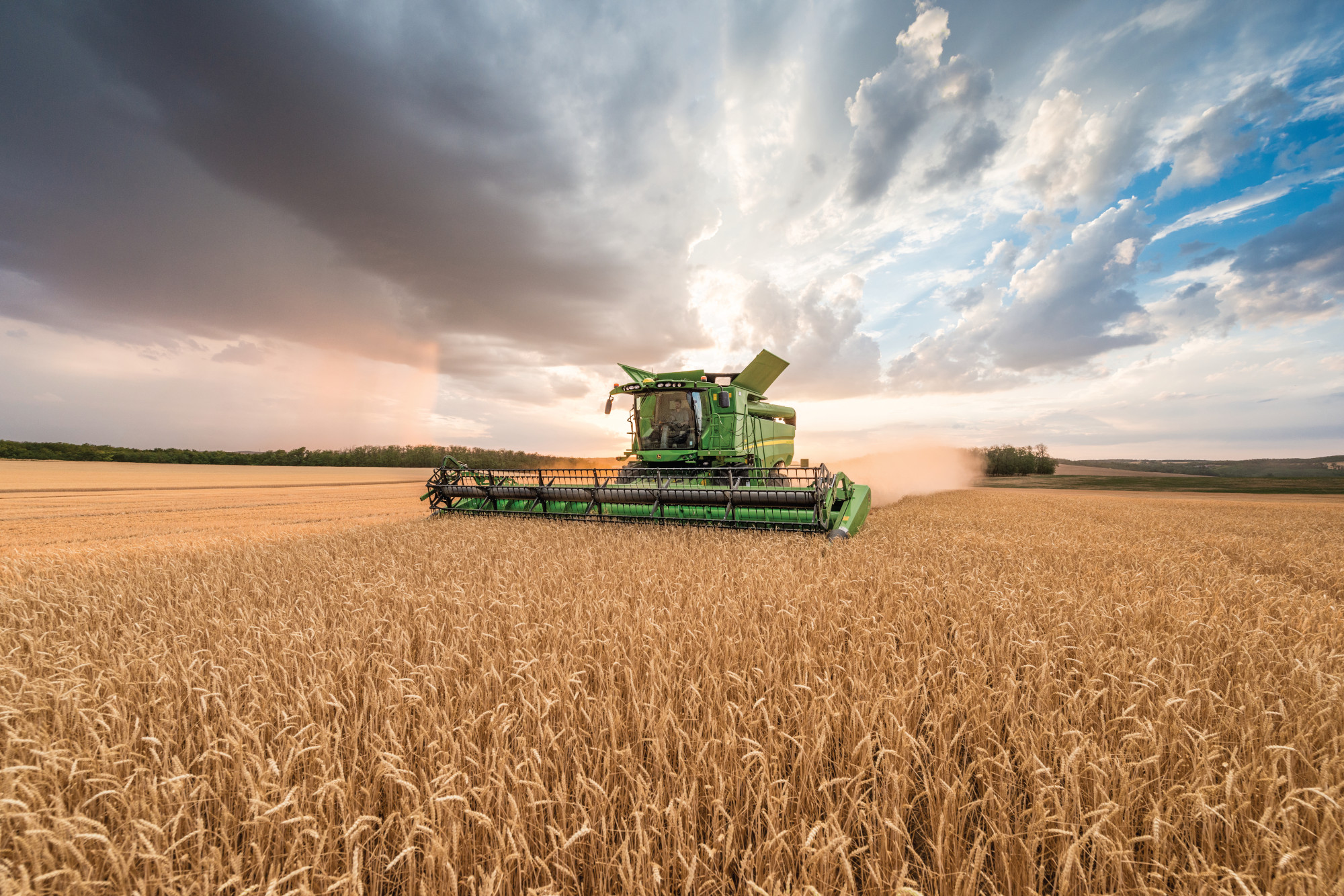
John Deere has also launched its HarvestLab feature on its S Series combines for harvest 23
The X9 is designed to excel in high moisture, tough separation conditions where this machine has been tested extensively. “Its output means operators can harvest more grain at the right times of day to help reduce drying costs and fuel use,” says Ross.
Throughout development of the X-Series combines, John Deere has focused heavily on harvesting efficiency. Through developments in transmissions, crop handling, cleaning systems and the new Xcel straw chopper knives, harvesting power requirements have been reduced by 120hp (86kW), while at the same time delivering increased performance, says Ross.
John Deere has also launched its HarvestLab feature on its S Series combines for harvest 23. HarvestLab started out analysing grass and maize as it passed through the spout of John Deere’s forage harvesters, then progressed to manure sensing on slurry tankers and now can analyse constituents of barley, wheat and oilseed rape harvested through S Series combines, explains Ross. “This will allow users to make smarter decisions on the go.”
New Holland
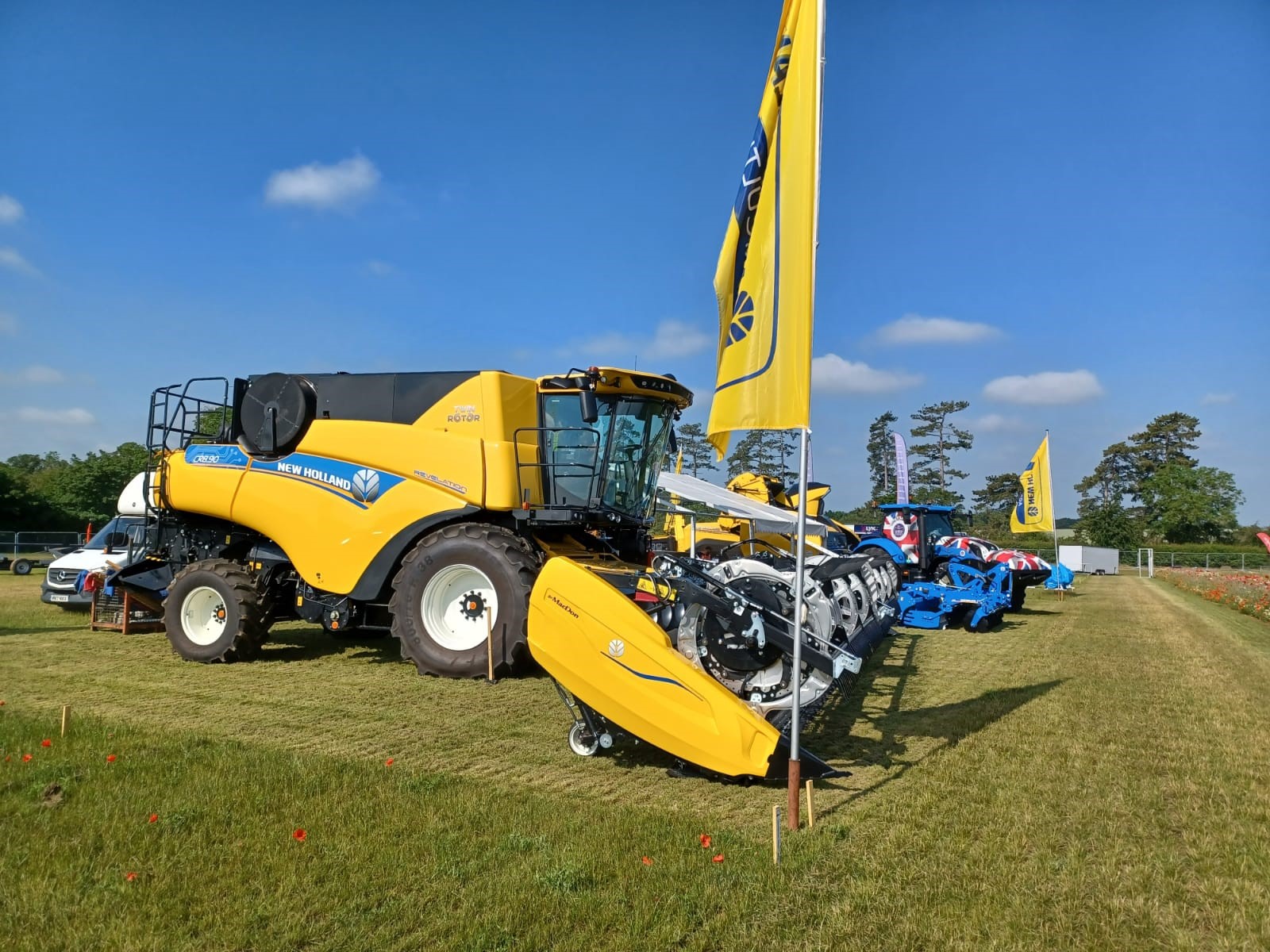
New for Harvest 23 will be the availability of the New Holland by MacDon range of draper headers, with both rigid and flex draper options.
New Holland’s CH7.70 combine is the latest addition to its CR twin rotor rotary range and the CX conventional range. The new Crossover Harvesting concept brings together Twin Rotor separation technology with the brand’s conventional threshing technology.
This Crossover combine aims to deliver grain and straw quality for all crops and conditions. The fuel-efficient engine with patented HI-eSCR 2 technology for Stage V compliance, should deliver high productivity, low operating costs and comes with the superior comfort of the Harvest Suite Deluxe cab, claims the firm.
“The CH7.70 introduces a new style of threshing drum,” explains the company’s Nigel Honeyman. “The Ultra Flow launches a few years ago but we’ve now segmented the rasp bars on the drum. So rather than the 152cm bar traditionally used, we’ve broken this into three and staggered them around the full circumference of the drum. This makes for a much smoother and quieter operation of the drum when operating with the damper, greener straw common in northern Europe.”
The Crossover technology delivers up to 25% higher throughput than a conventional combine in this segment. The two-drum threshing system features a 600mm diameter drum delivering threshing performance, according to New Holland. The large drum combined with the user-friendly sectional concave, should enable fast adaptation to different crops, in less than 20 mins.
Drum speed is controlled from the cab by a new heavy-duty hydraulic drum variator, which should mean that the speed is matched to crop and field conditions. The New Holland Opti-Thresh system adapts to crop conditions and maturity by repositioning the rear part of the concave – no tools required, says the company. When the hinged top section is moved away from the drum, the rubbing action is gentler, which should improve straw quality.
The CH7.70 combines this high-capacity two-drum system with New Holland’s Twin Rotor concept delivering the Crossover Harvesting experience. The specially designed 53cm, 3.45m long Twin Rotor system provides the largest separation area in the segment, at 2.9m². Minimal settings changes are required when switching between crops, to allow for crop-to-crop versatility.
New for Harvest 23 will be the availability of the New Holland by MacDon range of draper headers, with both rigid and flex draper options. “The flex draper is a segmented flexible frame header,” explains Nigel. “Rather than just having flexible knives, the header is built in three parts, with a central section and two wings which float independently. This is good on uneven ground where operators can have difficulties cutting crops at an even height.”
Incorporating a range of headers from 8-16m, the New Holland by MacDon will complement and extend the existing VariFeed range and provide operators with options to cover all terrains and cropping requirements, says Nigel. “These are another string in customers’ bows who have difficult cropping or terrain on farm.”
Fendt
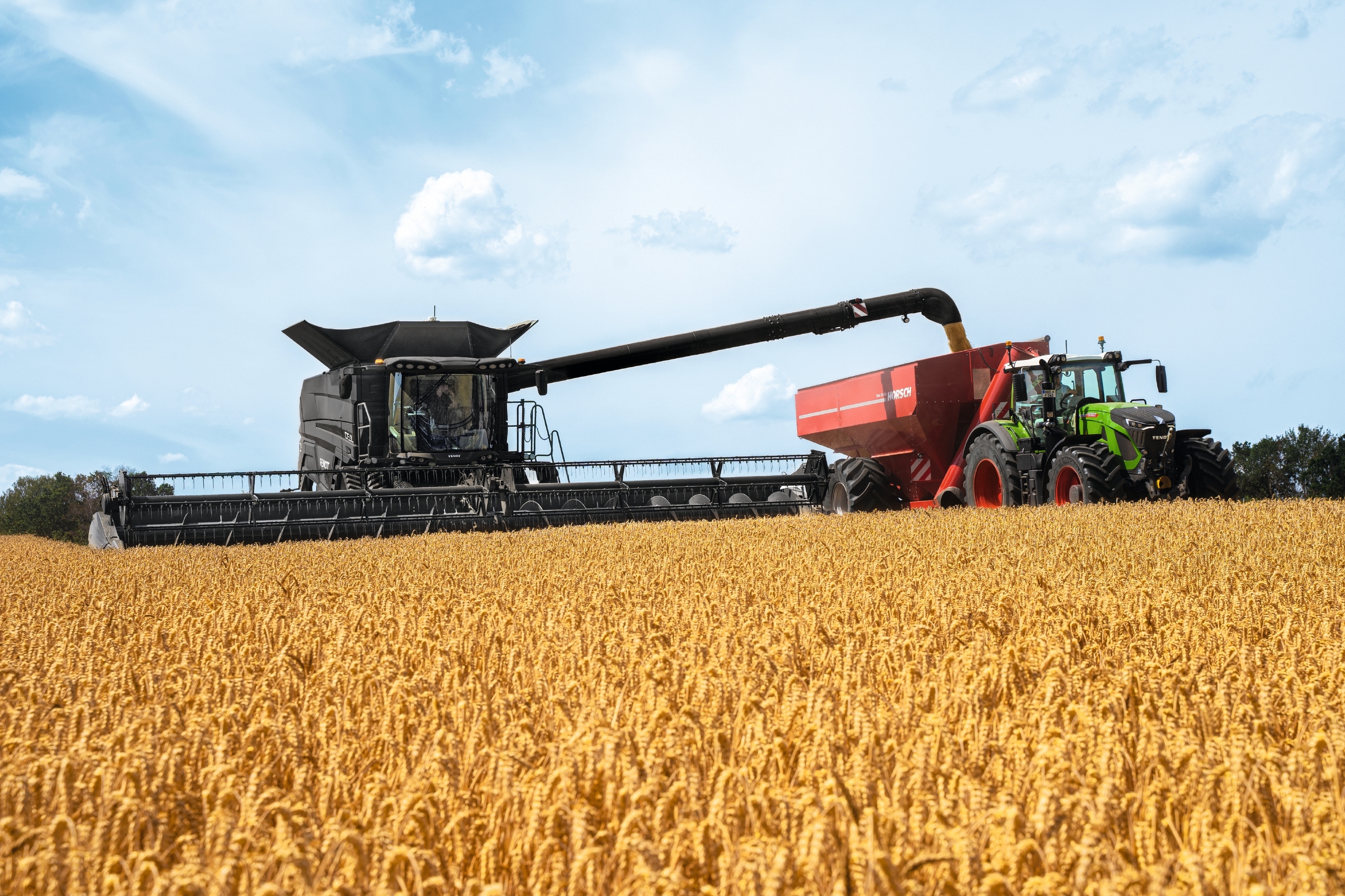
A newer element of Fendt’s range is that the cleaning system of the Fendt Ideal 9 has been reworked.
Fendt has also partnered with a header manufacturer in order to offer its customers flex draper headers. Fendt’s dealers across the country will be offering the full range of Geringhoff headers which are available in up to 13.7m, explains the firm’s Ant Risdon. “This partnership allows our dealers to sell Geringhoff headers and support customers going forward.”
After years of focusing on the Ideal, Fendt has launched a smaller straw walker combine for the 2023 season, says Roland Schmidt, marketing vice president of Fendt. The Corus 500 series sits in the 185-260hp segment and consists of nine models. The Corus 500 replaces the previous straw walker models, the 5185 E and 5225 E.
The 4.9-litre displacement, four-cylinder AGCO engine powers the Fendt Corus 518. The Corus 522 and 526 models are equipped with a 7.4-litre displacement, six-cylinder AGCO engine. For the first time, the new electro-hydrostatic drive is available for the entry-level models. It powers all models in the Corus 500 series.
Also new to this performance segment, the PowerFlow and FreeFlow header are available for all Corus 500 models, offering working widths of up to 7.60 m. Both headers are connected to the intake elevator via the WorldWide Hook Up header mount. This allows flexible mounting of all available and compatible headers.
The Fendt Multi Crop Separator (MCS) – which is familiar from the L-series – plus threshing system is optional for all models of the Corus 500.
The Corus 518 is available with a 5200-litre grain tank capacity and an unloading capacity of 72 litre per sec, as standard. For the Corus 522, as well as Corus 522 MCS model, a 6500-litre grain tank can be selected as an option. The unloading capacity is then 85 litres per sec.
A newer element of Fendt’s range is that the cleaning system of the Fendt Ideal 9 has been reworked, helping to boost the machine’s overall performance with improved cleaning results, claims the company.
“This is quite a significant update as this increases performance and quality is retained with more output,” says Ant. In the new cleaning system, the grain drops down to the top sieve through two curved double-drop steps. Thanks to the curved shape, the heavy grains gather in the lower section while the lighter parts accumulate above.
The curved steps of the cleaning system provide a wider air outlet, which can increase the air volume and should make the cleaning process more efficient, says Ant. With two drop levels, most of the short straw and chaff is separated on the first level. The remaining non-grain components are separated on the second. The cleaning system works over four sections, two return floors ensure even distribution and coverage across the preparation floor.
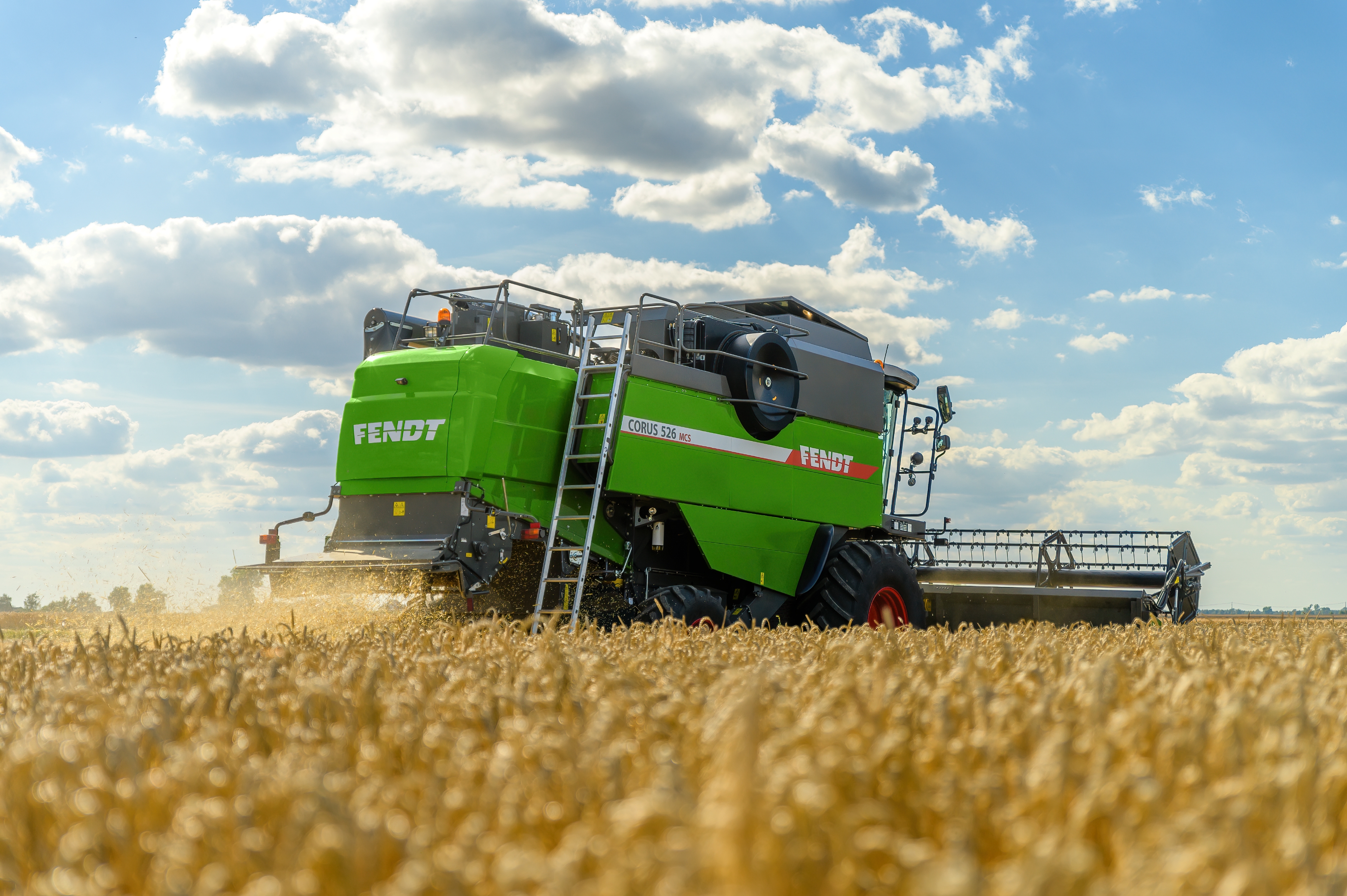
Fendt’s new Corus 500 series sits in the 185-260hp segment and consists of nine models.
The ActiveSpread SwingFlow straw distributor has been specially designed for tough harvesting conditions. This is an extra straw spreading option that achieves a more even distribution even in humid harvest conditions.
A further Fendt upgrade is that combines from the Ideal, C- and L-series can now be equipped with the central Fendt Connect telemetry system. Fendt Connect helps users to manage their fleet wherever they are and optimise machine settings. Customers can use their PC or smart device to view and analyse their own machine data, including machine position and its CAN bus data, such as engine speed, fuel and AdBlue consumption, and machine speed. This helps plan harvesting processes faster and more efficiently, says Ant. “Customers can view harvest data to check machine utilisation more precisely.”
With the consent of the vehicle owner, dealers can access the machine data. A quick overview of upcoming service intervals or checking error codes makes maintenance work on the machine easier and reduces downtime during harvesting, according to Fendt. The customer always retains ownership of their machine data. Operating statistics and agronomic data are neither stored nor transmitted.
Fendt Connect comes as standard on the Fendt Ideal and is available as an optional extra for C- and L-series Fendt straw walker combine harvesters.
Massey Ferguson
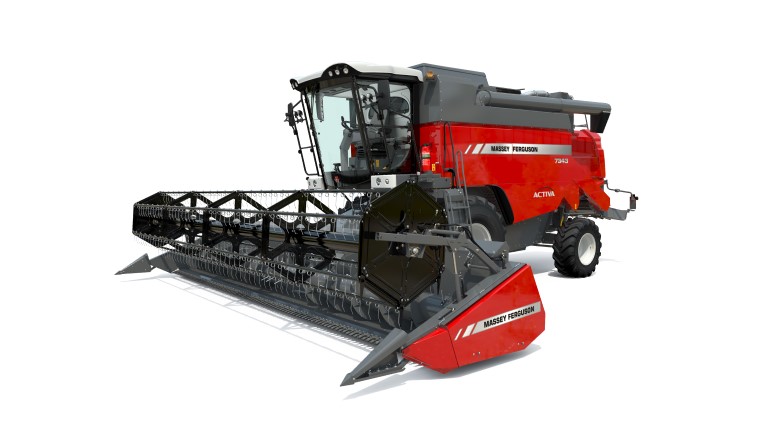
Massey Ferguson has announced the introduction of its completely renewed MF Activa range of five straw-walker combines.
Massey Ferguson has announced the introduction of its completely renewed MF Activa range of five straw walker combines, which aim to deliver more power, additional features and the option of Multi Crop Separator on all models.
The MF Activa combine range is targeted at harvesting a wide range of crops on small to medium-sized farms. On top of the standard grain configuration, all are available in an anti-wear version.
A completely new 260hp model – the MF Activa 7344 – now heads the range. This is joined by the new 226hp, MF Activa 7343 and 185hp, MF Activa 7342 – all available with the option of electronically controlled hydrostatic transmissions and cab upgrades.
“These machines are designed specifically for those looking to secure their own harvests,” says Jérôme Aubrion of Massey Ferguson. “MF Activa combines offer users a combination of the latest technology with comfort and control, ease of use and proven features.”
The new combines have power options ranging from 185hp to 260hp and share a similar drum and concave threshing system.
The threshing system employs a 600mm diameter, 1340mm wide drum fitted with eight rasp bars. Switching between crops is designed to be straightforward using a sectional concave, which enables operators to quickly change between a large or small grain sections, claims the firm.
Multi Crop Separator (MCS) is available on all models to help optimise separation, says Massey Ferguson. This should increase separation by up to 20% and improve harvesting flexibility while preserving the straw quality. This additional separator can rotate the concave completely out of work when it’s not required.
A new modular grain pan – as used on Massey Ferguson’s larger combines – is fitted with removable, hard-wearing plastic sections. These aim to improve versatility, making it much easier to clean when working in difficult conditions, claims the company.
MF Activa 7343 and MF Activa 7344 models can be equipped with Massey Ferguson’s Powerflow header. This table uses a continuous belt feed to gather crops and deliver an even ‘heads first’ feed, while reducing losses. Available in widths from 5.5m-6.2m, it can boost output by up to 73% in oilseed rape, 15% in wheat and 12% in barley, according to Massey Ferguson.
The MF Activa 7342 is equipped with the Freeflow header in widths from 4.8-6.0m and this is also available for use on the two larger combines up to 7.6m wide. The headers are designed to be easy to mount to the feeder house and quickly connected with the hydraulic Multicoupler. Automatic header height control is standard, while lateral flotation is an option.
All MF Activa combines are equipped with the latest, Stage V AGCO Power engines. A 7.4-litre, six-cylinder powers the MF Activa 7343 and MF Activa 7344, while a 4.9-litre, four-cylinder delivers economical operation for the MF Activa 7342. Both have four valves/cylinders with hydraulic lash adjustment to reduce maintenance.
Massey Ferguson has completely updated the MF Activa combines’ hydrostatic transmission. This now employs the latest generation, electronically controlled pump, which is designed to deliver smooth and precise operation, claims the firm.
A range of cab upgrades include a new seat-mounted armrest. The multi-function lever, at the front, now electronic control of the hydrostatic transmission and includes the unloading auger switch among numerous other functions.
New cab, new models, more tech
It’s that time of year again when combine manufacturers announce what’s new for the following season and Claas is first out of the blocks with a myriad of updates. But before getting to those, head of the grain harvest division of Claas, Jan-Hendrik Mohr, concedes the manufacturer has faced issues meeting orders for harvest 22, but it pulled out the stops to ensure customers had a machine in the yard, be it a second-hand unit or moving combines from eastern to northern Europe.
There is a glint of light at the end of the tunnel, Jan-Hendrik says the start of a slowdown in the manufacturing of construction machines means components are becoming more readily available from suppliers, which has been one of the issues for Claas (and many others). However, agricultural machinery order books are still full due to demand and some sales reps are already discussing deals for 2024.
At the top of the Claas combine food chain there’s been a rejig, both the wheeled and tracked variants of the 8700 and 8800 have received a power increase. The 8700 sticks with a Merc engine but goes from 585hp to 625hp (max power rating), while the 8800 exchanges the 653hp Benz for a 700hp MAN.
Claas UK combine specialist Rob Portman points out that there’s now a more even horsepower step between the 8700, 8800 and the 8900, the latter staying with 790hp. But as part of the new wide body hybrid shakeup, the 8600 – which has been available in North America since the range was introduced in 2019 – is now being added to the European range, albeit with a 549hp MAN motor – the same engine and power rating as the narrow body hybrid 7700.
Rob says that UK farmers currently running the likes of a 625hp 780 have a comparable model if they don’t need an increase in output offered by the 8800 or 8900. He adds that while the larger 18,000-litre grain tank has been added as an 8800 option, as on the 8900, the vast majority of UK customers will stick with the 15,000-litre version which holds 13.5-14.0t and proves more than adequate.
All Lexion models get the option of a pivoting end spout, something which has been offered by competitors for several seasons for more controllable trailer filling and has proved popular in the UK with Trion customers.
All walker and hybrid Lexions now get the cab from the Trion. As well as providing more leg and headroom, the slimmer A-pillars and larger glass area provide improved visibility. The seat can swivel side-to-side by 30° and can be upgraded to leather and customers can even have a subwoofer. Extra storage is another plus point.
Dynamic Steering also makes an appearance on the Lexion options list. This reduces the number of turns of the steering wheel to go from lock-to-lock by 40%. Speaking of steering, GPS Pilot is also added to the list of automated steering options. Claas has recently partnered with Trimble for its steering solution and, if customers opt for this, then they get the CEMIS 1200 display as a secondary screen, replacing the long-serving S10.
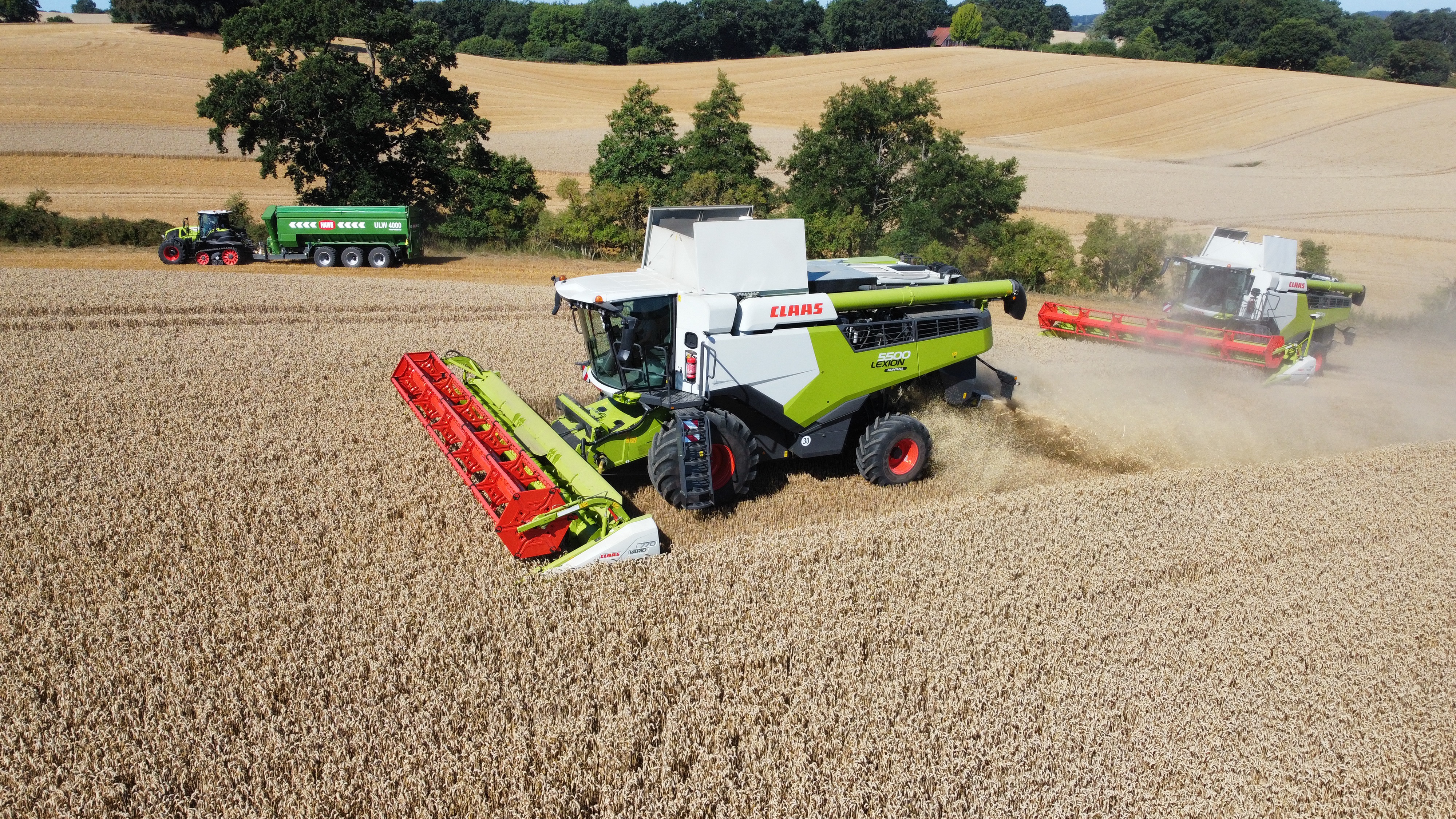
The Montana self-levelling system makes a return to the Lexion range in the shape of the 5500 and 7700.
The Claas Electronic Machine Optimising System (CEMOS) has been further refined and extra optional features added. CEMOS Dialog prompts the operator step-by-step through the losses calibration process to make it more accurate and prevent input errors. CEMOS Auto Header for the standard and Vario tables uses the Field Scanner mounted in the cab roof to automatically alter the fore/aft and height of the reel, plus the position of the knife in relation to the crop volume. Rob notes that CEMOS Automatic is almost a default choice for UK Lexion 8000 series customers, with a high uptake on the larger 7000 series too.
The Montana chassis levelling system is once again being offered on the Lexion ranges, namely the five-walker 5500 and the narrow-body hybrid 7700. As before, the left and right front wheels can oscillate to counter cross slopes of up to 18° and longitudinally by up to 6° by raising and lowering the rear axle position. It’s also still restricted to wheeled models as the tracks cannot take the lateral forces.
Lastly, the single-piece reel Vario headers get the new drive system, first introduced on the split-reel models that uses a gearbox instead of a chain. And there is a new lighter, mechanical side knife design that is also simple to fit. Auto-header detection is a new standard feature, the combine recognising which table is attached and uploading the relevant settings.
This article was taken from the latest issue of CPM. For more articles like this, subscribe here.

